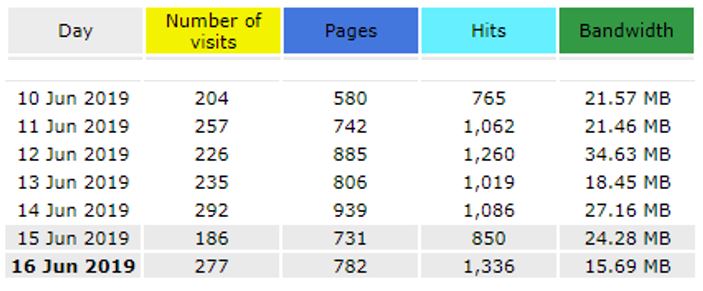A creator must know his audience.
Statistics of Week 2 – 10th to 16th June 2019 for MOHANMA.COM

Unique visitors for MOHANMA.COM in the 1st and 2nd week of June 2019 inclusive is 949.
Number of visits between June 10 to June 16 is 1677.
14th June 2019 had the highest number of visits – 292.
Average hits received per day is 1054.
Thanks to everyone who have been visiting the site.
Quote for the day – 17th June 2019
Every new challenge that you face prepares you for the next level ahead.
HSR Layout(Kengal Hanumanthaiah Layout): A residential area with Beauty and Brains(Pun intended)

If you are a Bengalurian you would have probably come across HSR Layout by now.
Located in south-east Bengaluru is Hosur Sarjapura Layout.
Towards the North of the layout is the Sarjapura road and in the west is the Hosur road.
Sarjapura road upto Iblur signal is also part of outer ring road(ORR).
Outer ring road of Bengaluru houses many Fortune 500 companies making HSR layout the goto residential area for professionals.
This layout hosts the beautiful Agara lake.
HSR layout is divided into 7 sectors.
Lord Hanuman temple(with mammoth statue) is the guardian deity located in Agara(near Sector-1).
There are many temples of historical significance in Agara.
HSR Layout is turning out to be the new startup hub dethroning Koramangala from top.
27th Main road located to the east of layout is a shopping zone of sorts with almost every top brand of clothing and consumer goods having a shop here.
Also, the charming National Institute of Fashion Technology(NIFT) is located on this road.
Many leading banks of the country have branches throughout the layout.
At the center of the layout is BDA(Bengaluru Development Authority) complex(Sector-6) which is another shopping zone.
Roads throughout the layout are well planned.
It is one of the few layouts in Bengaluru which has more parks providing lung space for its residents.
There is no dearth of restaurants as their number is increasing with time.
A post office at BDA complex, Police station in 27th Main road, BESCOM and BWSSB offices alongside 17th cross road, HSR has all basic official organisations.
BMTC(Bangalore Metropolitan Transport Corporation) which is the local bus transport body also has a station in HSR layout.
If you have not yet been to this place, start reaching out to 560102(pincode).
Note: Beware of Silk Board
Health tip for the day – 16th June 2019
Physical inactivity is a lethal habit.
Quote for the day – 15th June 2019
Imagination fuels the engine of innovation.
Quote for the day – 14th June 2019
True joy is finding happiness in little things.
Quote for the day – 13th June 2019
Let everything come from within you rather than without you.
Quote for the day – 12th June 2019
Thought is the most powerful media in the history of mankind.
Quote for the day – 11th June 2019
Definiteness of purpose is the bullseye.
